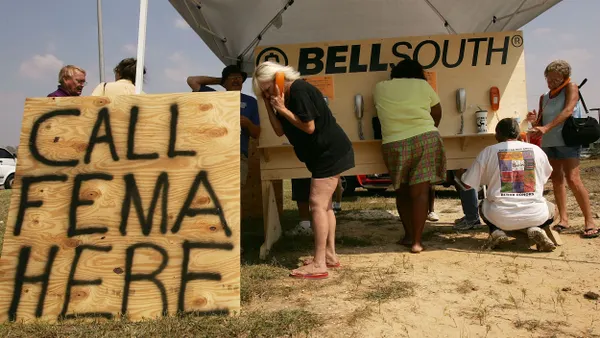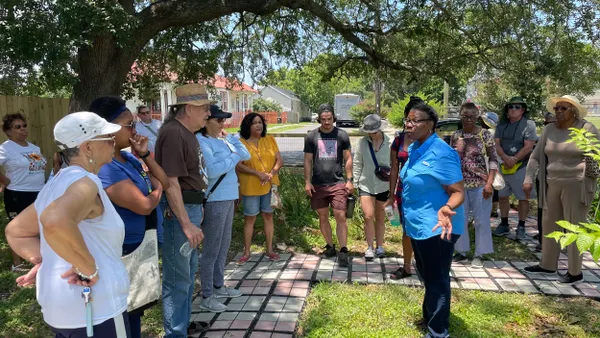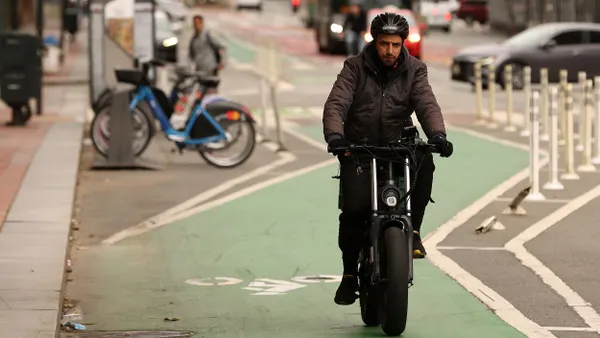Editor's note: This article was originally published in American City & County, which has merged with Smart Cities Dive to bring you expanded coverage of city innovation and local government. For the latest in smart city news, explore Smart Cities Dive or sign up for our newsletter.
On Jan. 13, 2024, a king tide and strong winds toppled a sea wall that had stood for decades in Salem, Mass., sending waves of seawater gushing into the historic city’s Juniper Point neighborhood.
The dramatic crumbling of the sea wall was a stark reminder of what is becoming increasingly obvious in coastal towns like Salem: the seas are rising, and the risk of flooding is getting worse.
“The climate crisis is here,” Salem Mayor Dominick Pangallo said in a statement in August. Like many cities, Salem is exploring ways to mitigate the increasing impact of rising sea levels that are creeping into communities.
Because of its significant flood risk, Salem was recently chosen to be part of a Home Resilience Audit Pilot Program in partnership with QBE North America Foundation, an arm of insurance provider QBE Insurance Group Limited, and InnSure, a nonprofit dedicated to insurance solutions that address climate change risk challenges.
The public-private pilot program began Feb. 11 and is designed to explore and evaluate measures that could lower flood risks for homeowners and renters and develop a base model that could be replicated in other communities.
In addition to resilience audits for homes, plans for the program include a “community-embedded insurance solution” to reward climate adaptation efforts for households and communities. This type of insurance can be group-purchased by a local municipality or community organization and covers individuals “to enhance individual and collective financial resilience of the community,” according to Charlie Sidoti, executive director of InnSure.
“The design of an optimal community-embedded insurance program requires thorough and transparent accounting for the total cost of risk,” Sidoti told AC&C in an email. InnSure’s “Total Cost of Risk Simulator” looks to address gaps in the current insurance market wherein the true cost of catastrophic events on household and local government budgets are not accounted for, according to Sidoti.
“Group purchase of insurance, backed by blended public and private capital stacks, is an effective way to close the protection gaps, which, in turn, can reduce the total cost of risk,” Sidoti said.
For its part of the initiative, Salem will develop a no-cost home flood resilience assessment program with a goal of enhancing flood mitigation efforts and expanding insurance access.
“We’re excited to explore innovative solutions that can help mitigate climate-related risks for our residents and other community members,” Pangallo stated.
In June 2024, Pangallo also helped to form the Massachusetts Coastal Communities Alliance, a network of local government leaders facing similar impacts from climate change.
“Through this new alliance, we can further collaborate with one another as we work to protect our communities,” Pangallo stated. “Coastal towns and cities are on the front line of experiencing climate impacts and we each bring a powerful and important perspective to the work ahead.”
Climate adaptation efforts
The project is exploring what types of climate adaptation efforts households and communities could undertake that could mitigate flooding risk. While specific efforts have not yet been approved for the program, Sidoti pointed to integrated rainwater harvesting technologies as one possible example.
“There are companies, such as Gravity Water, that offer integrated rainwater harvesting technologies,” Sidoti said. “They’re like rain barrels for your gutters, but much more high-tech; the systems would divert water runoff reducing the risk of flash flooding to both the asset owners and building tenants.”
Other actions could include moving building systems—such as heating and cooling—out of basements and above likely flood elevation, as well as restoring localized coastal areas, many of which are privatized, according to Sidoti.
The pilot program may also expand to address wind damage, as well.
“We’re very interested in home-level improvements that complement community-wide infrastructure planning and can be quantified and captured in insurance markets,” Sidoti said.










